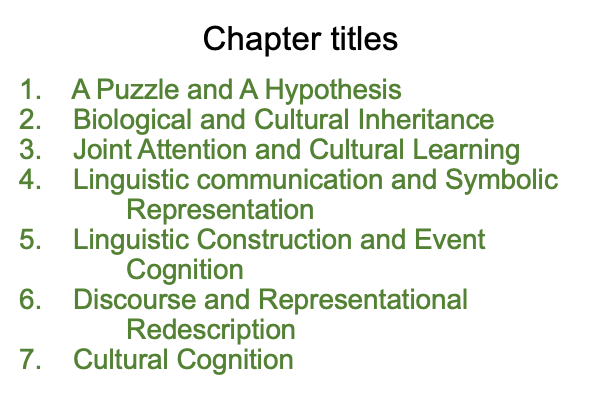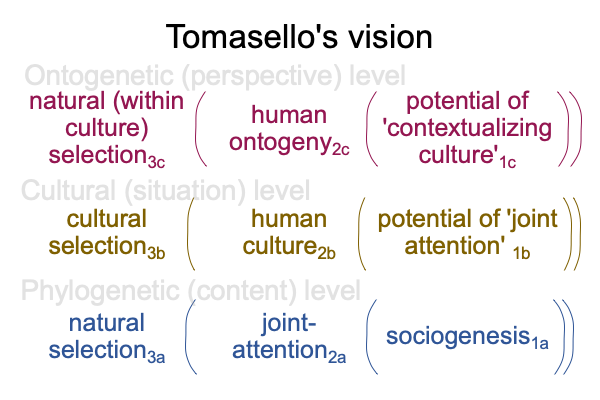0055 Here is a list of the chapters of the book before me.

0056 Once again, here is the three-level interscope of Tomasello’s vision.

0057 Do these figures correspond?
Well, if they do correspond, then Tomasello envisions a grand schema, weaving together hominin evolution and modern linguistics into one explanatory canvas. Human ontogeny2c describes the phenotypic expression of human cognition. Culture2b describes traditions concerned with inspiring, interpellating and guiding human ontogenetic development2c. Joint attention2a is the foundational adaptation, emerging from (and situating) the niche of sociogenesis1a, making human cultural traditions2b possible.
0058 To me, the first three chapters concern the first two levels of Tomasello’s vision. The remaining four chaptersdiscuss the second two levels.
Details?
0059 In chapter four, Tomasello proposes that the social-cognitive basis of language acquisition is modeled by scientific inquiry into joint attention2a. Communicative intentions are key. Imitative role-reversal, along with intersubjectivity, is at play. Joint-attention2a starts without language, at the age of one year. Language acquisition starts soon afterwards.
